With some good advice from various travel sources, we decided to bypass the hoards of tourists and tour buses at the top of the Cliffs of Moher. After all, we had already gotten the best view of the cliffs from our boat, yesterday. Our goal was the Loop Head Lighthouse 60 kilometers further down the coast. As the name implies, it is at the end of the peninsula and is reported to have cliffs as spectacular as the Cliffs of Moher but without the crowds. We turned on the GPS, Lilith, by name, and let her do the navigating. Lilith is named after the character in the TV program, Frazier, the totally drab and monotone sounding wife. Anyway, one thing that we have learned about Lilith is that she will send us down almost any type of road or lane regardless of its size as long as she considers it the shortest route. Consequently, we have seen some lanes that had grass growing up in the center of the path! Lilith did not disappoint on this adventure, and we saw some places that can only be stumbled upon.
After about 90 minutes over hill and dale, we finally got to Loop Head
. We were not disappointed! The present lighthouse was built in 1854 but there had been a light at that location since the 1700s. It is still in use today. It didn't get electricity until 1971 and was gas and oil before that.
The cliffs surrounding the light are beautiful and well worth the drive. The best part was that there were almost no other visitors and the car park doesn't even have places for buses! A very cute local lady gave us the Cook's tour of the light and suggested a walking route around the cliffs. A highly worthwhile 90 minutes.
Historical note: the light was used during WW II as an aid for aircraft coming from the USA and Canada. A huge rock sign was whitewashed in front of the light ("EIRE") to let the flyers know they were still short of England and not to land. (Ireland was a neutral country during the war and would have interned the crews if they had landed.)
Now about noon, we headed for the ferry crossing on the River Shannon
. By the time we got there it was closing in on 2 p.m. and the ferry only runs every hour, on the hour, going our direction. Superb navigation by me and sound driving by Dayna got us there just in time to catch the 20 minute crossing. On to Milltown, County Kerry, our destination.
Tonight, we are at the Shortcliff House B&B. Probably the nicest one we have stayed at on this trip. Coffee and tea were served in the dining room shortly after our arrival. We had a brief rest to check in with the home front, and it was time for dinner.
Milltown is not a cornucopia of fine dining establishments, but it did have a nice pub that served dinner. The Irish are very proud of their food, visa vi the cost. But one thing I will say, if you go away hungry it's your own damn fault. For reference we had Shepherd's pie (Dayna) and Dingle shrimp (me), beer and wine. The bill came to 36€. That's $45 US. The up side is that there is no tipping expected. Servers are paid well here, because it is considered a real job, unlike in the USA, especially Utah where Patrick earns a whopping $2.13/hr. So, all in all, it was an expensive meal, but not a deal breaker.
We have been averaging 5 - 8 miles a day walking, according to Dayna's FitBit pedometer. Today we didn't cover as much ground, maybe a little over a mile. We'll do better tomorrow. We head to the Dingle Peninsula in the a.m. for the day.
A day without tourists!
Tuesday, September 23, 2014
 Milltown, Province of Munster, Ireland
Milltown, Province of Munster, Ireland
Other Entries
-
1About This Blog
Sep 0122 days prior Salt Lake City, United Statesphoto_camera0videocam 0comment 0
Salt Lake City, United Statesphoto_camera0videocam 0comment 0 -
2Leaving On A Jet Plane . . .
Sep 1310 days prior Salt Lake City, United Statesphoto_camera2videocam 0comment 0
Salt Lake City, United Statesphoto_camera2videocam 0comment 0 -
3We Have Landed
Sep 158 days prior Dublin, Irelandphoto_camera20videocam 0comment 5
Dublin, Irelandphoto_camera20videocam 0comment 5 -
4Dublin Hop On, Hop Off
Sep 167 days prior Dublin, Irelandphoto_camera35videocam 0comment 1
Dublin, Irelandphoto_camera35videocam 0comment 1 -
5We Traveled Back in Time
Sep 176 days prior County Meath, Irelandphoto_camera54videocam 0comment 5
County Meath, Irelandphoto_camera54videocam 0comment 5 -
6Our First Day on the Left
Sep 185 days prior Roundstone, Irelandphoto_camera11videocam 0comment 0
Roundstone, Irelandphoto_camera11videocam 0comment 0 -
7Connemara
Sep 194 days prior Letterfrack, Irelandphoto_camera32videocam 0comment 2
Letterfrack, Irelandphoto_camera32videocam 0comment 2 -
8Downtown Galway
Sep 203 days prior Galway, Irelandphoto_camera34videocam 0comment 2
Galway, Irelandphoto_camera34videocam 0comment 2 -
9The Burren
Sep 212 days prior Doolin, Irelandphoto_camera31videocam 0comment 6
Doolin, Irelandphoto_camera31videocam 0comment 6 -
10The Aran Islands
Sep 221 day prior Aran Islands, Irelandphoto_camera65videocam 0comment 2
Aran Islands, Irelandphoto_camera65videocam 0comment 2 -
11A day without tourists!
Sep 23 Milltown, Irelandphoto_camera30videocam 0comment 1
Milltown, Irelandphoto_camera30videocam 0comment 1 -
12Dingle Peninsula
Sep 241 day later Dingle, Irelandphoto_camera70videocam 0comment 0
Dingle, Irelandphoto_camera70videocam 0comment 0 -
13A Little Bit of Blarney . . . .
Sep 252 days later Blarney, Irelandphoto_camera59videocam 0comment 1
Blarney, Irelandphoto_camera59videocam 0comment 1 -
14Just Another Dirty City . . .
Sep 263 days later Cork, Irelandphoto_camera42videocam 0comment 1
Cork, Irelandphoto_camera42videocam 0comment 1 -
15"I Have Come Back!"
Sep 274 days later Thomastown, Irelandphoto_camera14videocam 0comment 1
Thomastown, Irelandphoto_camera14videocam 0comment 1 -
16"Ballykissangel" And Then Some . . .
Sep 285 days later Avoca, Irelandphoto_camera32videocam 0comment 0
Avoca, Irelandphoto_camera32videocam 0comment 0 -
17A Ring Around Kilkenny
Sep 296 days later Cashel, Irelandphoto_camera69videocam 0comment 2
Cashel, Irelandphoto_camera69videocam 0comment 2 -
18The Medieval City of Kilkenny
Sep 307 days later Kilkenny, Irelandphoto_camera35videocam 0comment 6
Kilkenny, Irelandphoto_camera35videocam 0comment 6 -
19Waterford and New Ross
Oct 018 days later Waterford and New Ross, Irelandphoto_camera27videocam 0comment 3
Waterford and New Ross, Irelandphoto_camera27videocam 0comment 3 -
20Our Last day in Ireland
Oct 029 days later Glendalough, Irelandphoto_camera41videocam 0comment 0
Glendalough, Irelandphoto_camera41videocam 0comment 0 -
21Ship of Fools
Oct 0310 days later Cherbourg, Francephoto_camera25videocam 0comment 0
Cherbourg, Francephoto_camera25videocam 0comment 0 -
22Driving on the RIGHT!
Oct 0411 days later Connelles, Francephoto_camera9videocam 0comment 0
Connelles, Francephoto_camera9videocam 0comment 0 -
23Le Mont-Saint-Michel
Oct 0512 days later Le Mont-St-Michel, Francephoto_camera46videocam 0comment 0
Le Mont-St-Michel, Francephoto_camera46videocam 0comment 0 -
24We Split the Sheets . . .
Oct 0613 days later Bayeux, Francephoto_camera88videocam 0comment 0
Bayeux, Francephoto_camera88videocam 0comment 0 -
25Bayeux to Connelles
Oct 0714 days later Connelles, Francephoto_camera23videocam 0comment 0
Connelles, Francephoto_camera23videocam 0comment 0 -
26Medieval and Impressionist
Oct 0815 days later Giverny, Francephoto_camera31videocam 0comment 0
Giverny, Francephoto_camera31videocam 0comment 0 -
27Versailles
Oct 0916 days later Versailles, Francephoto_camera31videocam 0comment 3
Versailles, Francephoto_camera31videocam 0comment 3 -
28Rouen, France
Oct 1017 days later Rouen, Francephoto_camera27videocam 0comment 0
Rouen, Francephoto_camera27videocam 0comment 0 -
29Rouen to Paris by Train
Oct 1118 days later Paris, Francephoto_camera11videocam 0comment 0
Paris, Francephoto_camera11videocam 0comment 0
Comments
2025-05-22
Comment code: Ask author if the code is blank

 Milltown, Province of Munster, Ireland
Milltown, Province of Munster, Ireland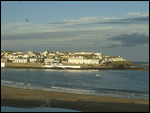
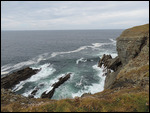



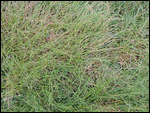
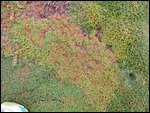
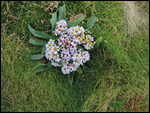
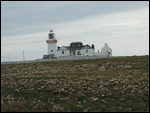

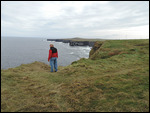
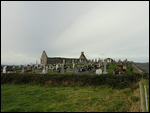
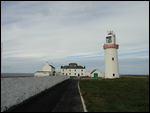
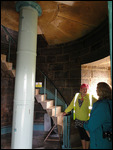
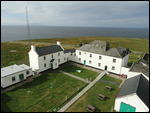
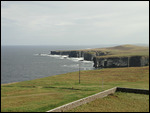
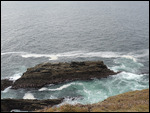

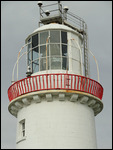
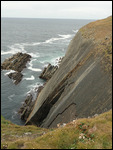
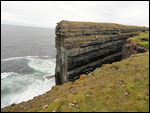
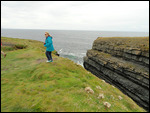
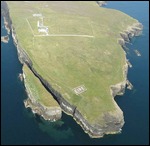
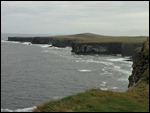
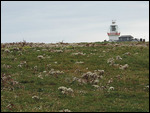
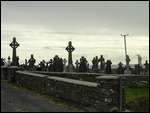
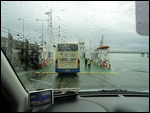
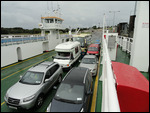
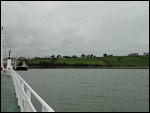
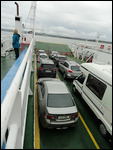
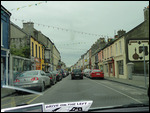
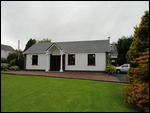
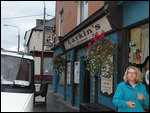
dayna-tom-2013
2015-01-27
Built during the Second World War, the Look Out Post and ‘EIRE’ sign on Loop Head were part of a network of 83 similar posts and signs along the Irish coast. The Look Out Posts were manned by local soldiers of the Coast Watching Service. They were the Defence Forces’ ‘early warning system’ against invasion. The ‘EIRE’ signs were daytime navigation aids visible to passing aircraft, alerting pilots that they were over neutral Ireland. The Battle of the Atlantic, the longest campaign of the war, took place off Ireland’s coast, often in sight of the Look Out Post network. The soldiers manning Loop Head Look Out Post reported military operations off the coast to G2, the intelligence branch of the Defence Forces, from where the information was sent to senior Irish political and military figures. Loop Head Look Out Post is of further strategic importance because it also sighted the transatlantic aircraft and flying boats operating from Shannon and Foynes.